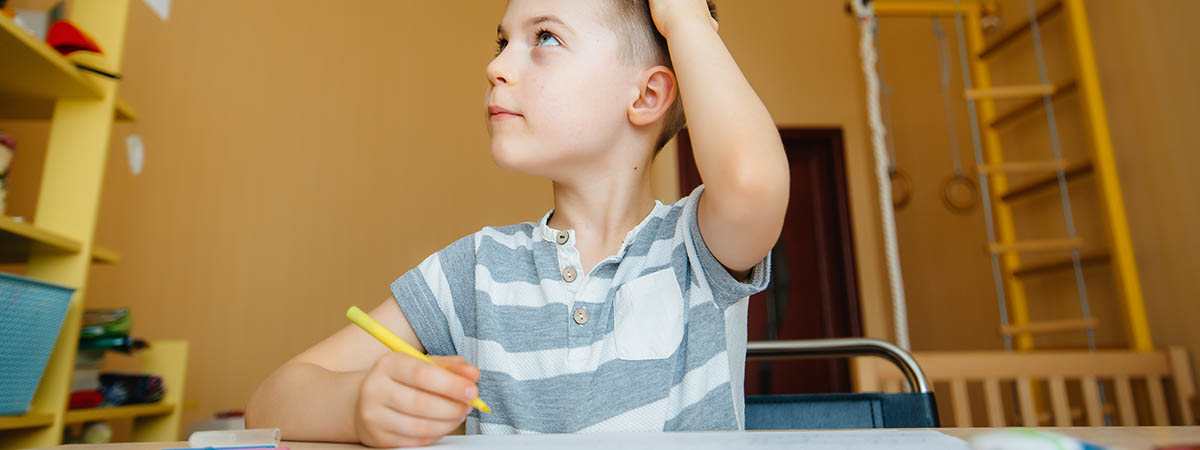By Dr. Christina Murray, O.D. — founder of Center for Better Learning in Coconut Creek, FL. Dr. Murray is originally from Columbus, Ohio, and is a proud graduate of The Ohio State University. She happily escaped the cold Ohio winters to attend optometry school at Nova Southeastern University. While in school, she discovered her passion for pediatrics and vision therapy. She is currently finishing up her board certification from the College of Optometrists in Vision Development.

Development begins with a set of automatic movement patterns that originate in the brain stem. These specific motor patterns are called primitive reflexes. They are essential for a baby’s survival during the birthing process and in the first few weeks of life. Primitive reflexes are fundamental for developing muscle tone, sensory integration, head control, and overall development. As the infant’s brain develops and matures, the infant’s movements become more voluntary and controlled. These reflexes should be integrated and replaced by highly refined, cortically controlled movements within the first year of life. Unfortunately, for many children, this is not always the case.
When these reflex patterns persist beyond their usual time span, they weaken the foundation for future development. They also cause the body to expend energy to inhibit movement patterns. Less attention and energy is available to perform higher-level tasks, such as those needed for efficient learning. Retained primitive reflexes may be the result of:
Infants exhibit over 70 primitive reflex patterns, but five have the most significant impact on the learning process if retained. These reflexes are the moro, tonic neck reflex, symmetric tonic neck reflex, asymmetric tonic neck reflex, and the spinal galant.

Moro Reflex:
The moro reflex is an infant’s fight or flight response. This movement pattern is observed as an infant cries, throws back their head, and then pulls their limbs into the body in response to sudden movement, temperature changes, or loud noises. Poor auditory discrimination, difficulty tracking, and visual processing problems indicate a retained moro reflex.
Tonic Labyrinthine Reflex (TLR):
The TLR reflex causes infants to straighten their legs and arms when looking up, and fold their limbs in when the head goes down. This reflex sets the foundations for the vestibular system and gross motor skills. Retention of the TLR can cause poor posture, balance, organization, and sequencing.
Symmetric Tonic Neck Reflex (STNR):
The STNR reflex is exhibited as the arms straighten and the legs bend when an infant looks up. Integration of the symmetric tonic neck reflex is essential to crawling on the hands and knees. Crawling sets the foundation for good hand-eye coordination, tracking, and binocular vision skills. Persistence of the symmetric tonic neck reflex causes poor eye-hand coordination, slow copying from the board, and poor posture.
Spinal Galant:
The spinal galant reflex causes infants to curve their hip outward when the lower back is stroked near the spine. This reflex pattern encourages movement to develop the range of motion necessary for walking and crawling. Retention of this reflex affects the ability to sit still, short-term memory, and concentration.
Asymmetric Tonic Neck Reflex (ATNR):
The retention of the ATNR has the most significant impact on a child’s learning processes. The active reflex pattern is exhibited by the limbs on the side of the body where the head is facing straighten, while the limbs on the opposite side of the body flex. Retained ATNR affects midline issues, eye tracking, balance, handwriting, and laterality.
For example, a retained STNR can significantly impact handwriting if each time a child turns their head to look at the page, their arm will want to extend, and the fingers will want to open. An enormous amount of effort is needed to hold the pencil, and a tight grip creates tension throughout the body. The child may develop an immature pencil grip, shift their body posture, and move their paper to a 90-degree angle to suppress the motor pattern. This added energy distracts the brain from efficiently processing the writing content. Children with superior verbal skills who struggle with the writing process may have a retained STNR inhibiting them from performing to their potential.
Let’s look back at two students in our class:
Student A:

This student exhibits good posture, efficient midline crossing, ease shifting attention near to far, and good concentration. There are no indications in their behaviors that they may have retained reflexes.
Student B:

This student wraps their feet around their chair, avoids crossing their midline, indicating a possible retained STNR. Difficulty shifting attention from the board to their paper and poor handwriting suggests a retained ATNR. The spinal galant may cause poor concentration in the classroom. Other various challenges in the learning processes may be due to the moro or the TLR.
Not only do retained primitive reflexes cause a child to exhibit specific behaviors, but they also set a weak foundation for higher-level cognitive skills. It is crucial to integrate these reflex patterns to create a solid foundation for future development and efficient learning. Next week, we will continue the sequence of development with the integration of the sensory systems.
If you would like to make an investment that lifts lives, brightens futures and strengthens the community, consider helping us. Please use the donate buttons below to select a secure method of online payment through PayPal, which allows donations by debit or credit card (PayPal keeps a two percent transaction fee for each donation).